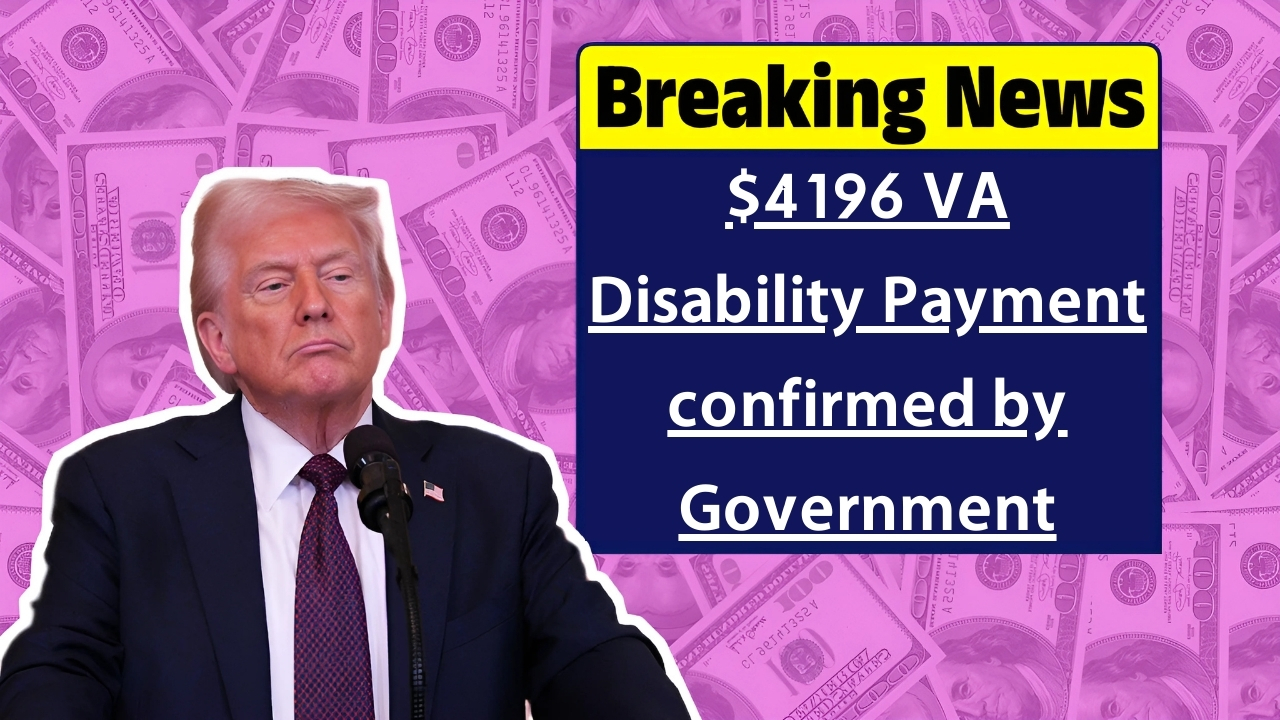VA Disability Payment : The Department of Veterans Affairs has confirmed that qualifying disabled veterans can receive monthly compensation payments up to $4,196, representing the highest tier of disability benefits available. This substantial payment acknowledges the profound impact that service-connected disabilities have on veterans’ lives and earning capacity. Understanding who qualifies for this maximum rate helps veterans and their families access the full benefits they’ve earned through their service and sacrifice.
Who Qualifies for Maximum Payment
The $4,196 monthly payment applies to veterans with a 100% disability rating who have eligible dependents. Single veterans with 100% ratings receive a base amount of $3,737.85, with the additional funds coming from dependent allowances. Veterans must have service-connected disabilities that the VA rates as totally disabling, either through a single severe condition or combined ratings that reach 100%.
Veterans with dependents see increased payments based on family composition. A spouse adds approximately $200 to the monthly benefit, while each child under 18 contributes an additional $100. Children between 18-23 attending school full-time also qualify as dependents. Veterans supporting dependent parents receive extra compensation, recognizing the financial burden of caring for elderly family members.
Understanding 100% Disability Ratings
Achieving a 100% disability rating typically occurs through several pathways. Some veterans have a single condition rated at 100%, such as certain cancers, complete paralysis, or severe mental health conditions that prevent any substantial gainful employment. These total ratings acknowledge that the veteran cannot maintain competitive employment due to their service-connected disabilities.

More commonly, veterans reach 100% through combined ratings from multiple conditions. The VA’s rating math doesn’t simply add percentages – instead, they use a formula that considers the combined effect of multiple disabilities. Veterans might have several conditions rated at 30-50% each that combine to create total disability when their cumulative impact is assessed.
Total Disability Individual Unemployability (TDIU)
Veterans who cannot work due to service-connected disabilities may qualify for 100% compensation even without a schedular 100% rating. TDIU allows veterans rated at 60% or higher to receive 100% payment rates if their disabilities prevent them from maintaining substantially gainful employment. This provision recognizes that disability impact varies among individuals.
Qualifying for TDIU requires demonstrating that service-connected disabilities create an inability to secure or follow substantial gainful occupation. Veterans must provide employment history, medical evidence, and often employer statements documenting how their disabilities affect work capacity. The VA considers education, training, and work experience when evaluating TDIU claims.
Special Monthly Compensation
Some veterans qualify for Special Monthly Compensation (SMC) above the basic 100% rate, potentially exceeding the $4,196 figure. SMC applies to veterans with specific severe disabilities such as loss of limbs, blindness, or need for regular aid and attendance. These additional payments recognize the extraordinary challenges faced by veterans with the most severe service-connected conditions.
SMC rates vary based on specific disability combinations and care needs. Veterans requiring daily assistance from another person for basic activities receive higher payments. Those with multiple severe disabilities might qualify for even higher SMC levels, with some categories reaching over $9,000 monthly for the most catastrophic disability combinations.
Application and Documentation Process
Veterans seeking 100% disability ratings must provide comprehensive medical documentation supporting their claims. This includes current treatment records, specialist evaluations, and detailed statements about how disabilities affect daily activities. The VA schedules Compensation and Pension examinations to assess disability severity and impact on employment capacity.
Successful claims often include vocational assessments demonstrating unemployability, buddy statements confirming disability impact, and thorough documentation of all service-connected conditions. Veterans should work with Veterans Service Organizations (VSOs) who provide free assistance navigating the complex claims process and ensuring all supporting evidence gets submitted.
Australia Age Pension increased by Government – Check new age details
VA Disability Payment Dependent Verification Requirements
To receive the full $4,196 payment including dependent allowances, veterans must properly register all eligible dependents with the VA. This requires submitting marriage certificates, birth certificates, and school enrollment verification for adult children. The VA periodically reviews dependent status to ensure continued eligibility.